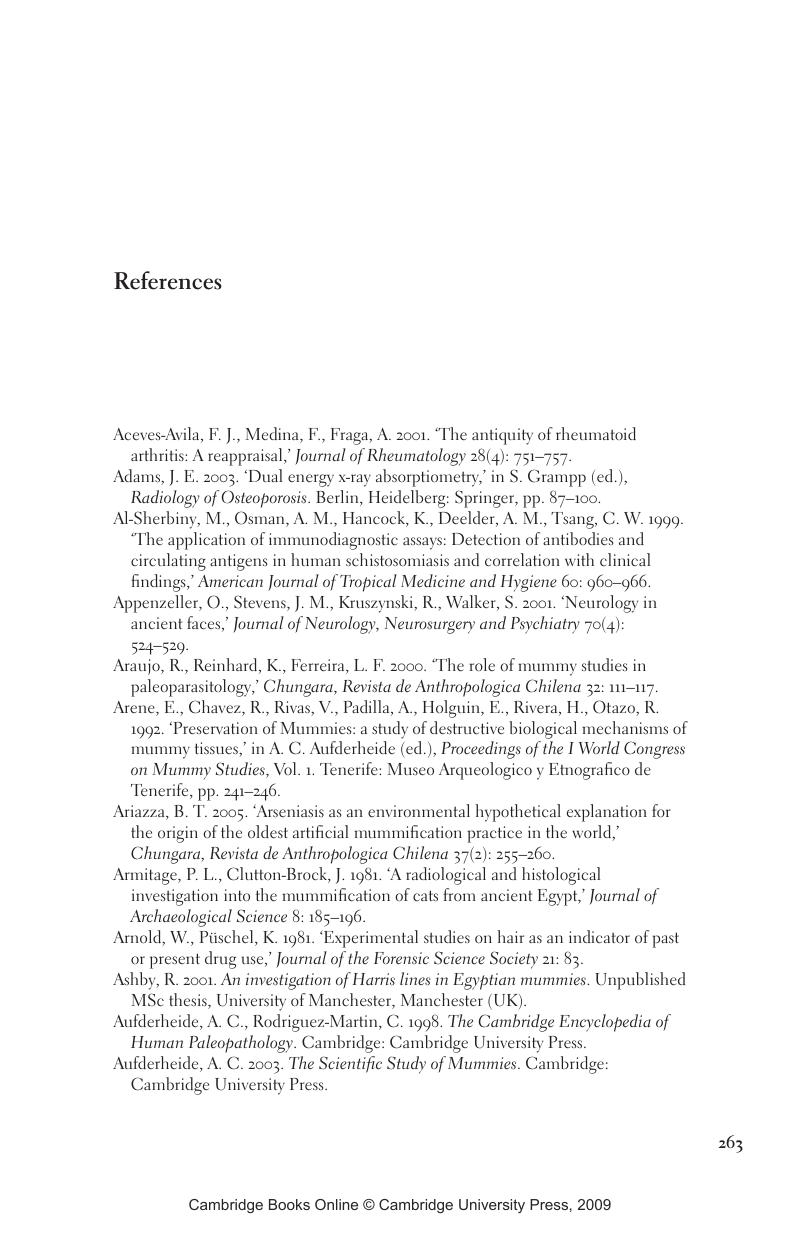Book contents
- Frontmatter
- Contents
- List of Plates
- List of Figures
- List of Contributors
- Acknowledgments
- Preface
- PART I AN INTRODUCTION TO THE SCIENTIFIC STUDY OF MUMMIES
- PART II DIET, DISEASE AND DEATH IN ANCIENT EGYPT: DIAGNOSTIC AND INVESTIGATIVE TECHNIQUES
- PART III THE TREATMENT OF DISEASE IN ANCIENT EGYPT
- PART IV RESOURCES FOR STUDYING MUMMIES
- PART V THE FUTURE OF BIOMEDICAL AND SCIENTIFIC STUDIES IN EGYPTOLOGY
- References
- Index
- References
References
Published online by Cambridge University Press: 18 August 2009
- Frontmatter
- Contents
- List of Plates
- List of Figures
- List of Contributors
- Acknowledgments
- Preface
- PART I AN INTRODUCTION TO THE SCIENTIFIC STUDY OF MUMMIES
- PART II DIET, DISEASE AND DEATH IN ANCIENT EGYPT: DIAGNOSTIC AND INVESTIGATIVE TECHNIQUES
- PART III THE TREATMENT OF DISEASE IN ANCIENT EGYPT
- PART IV RESOURCES FOR STUDYING MUMMIES
- PART V THE FUTURE OF BIOMEDICAL AND SCIENTIFIC STUDIES IN EGYPTOLOGY
- References
- Index
- References
Summary

- Type
- Chapter
- Information
- Egyptian Mummies and Modern Science , pp. 263 - 296Publisher: Cambridge University PressPrint publication year: 2008
References
- 1
- Cited by



